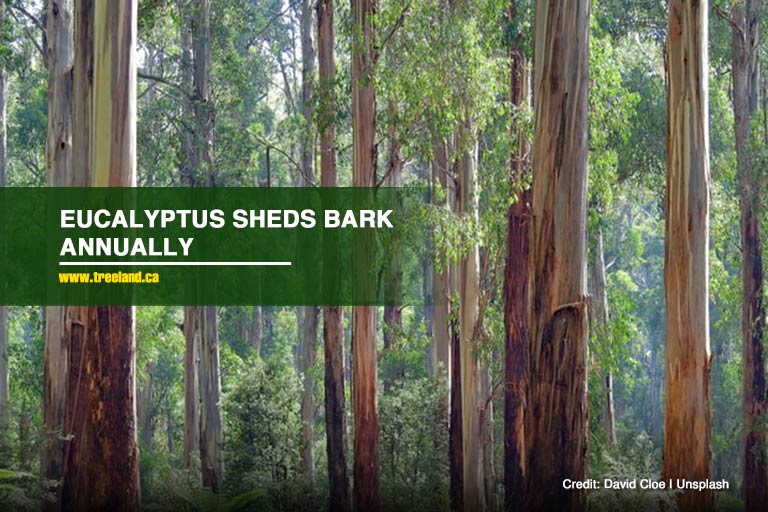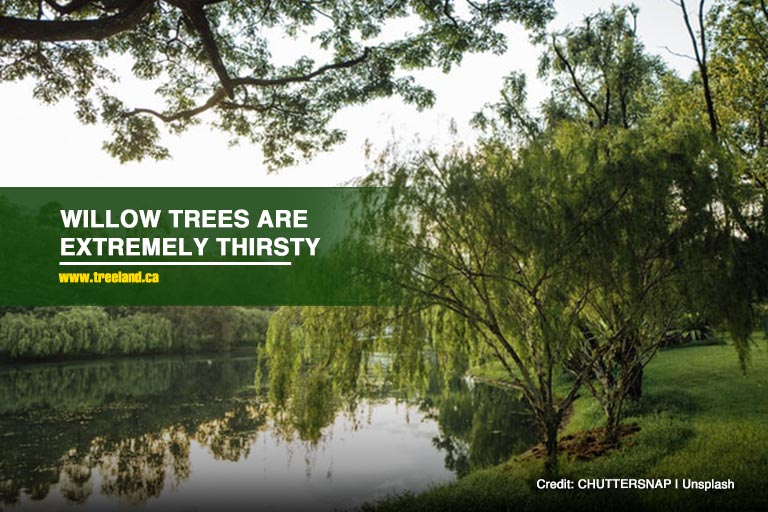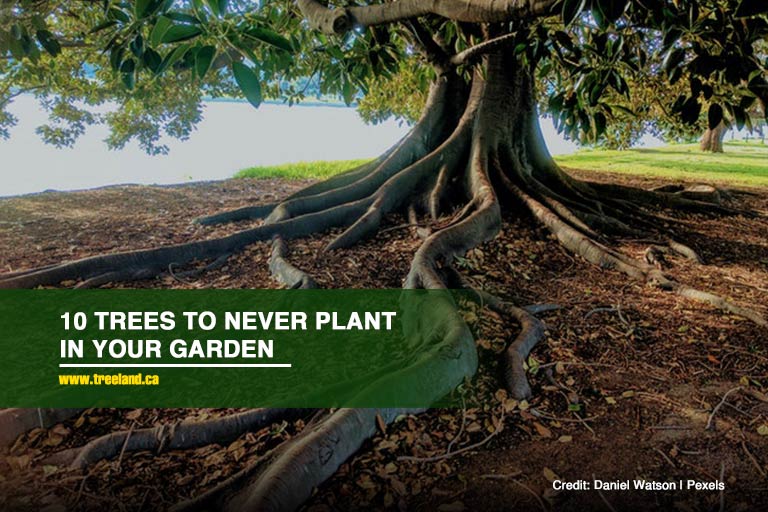Your home will benefit from the planting of trees. Wherever they are placed, they can provide shade, solitude, and beauty. And, it’s not just you that benefits from having good trees planted near your home. They may also provide shelter for birds and other wildlife, making them a haven for people and animals alike.

What Bad Trees Can Do to Your Garden?
While planting trees is an excellent idea, they should not be planted hastily. For your tree to prosper and avoid unintended repercussions, proper planning and preparation are required. In reality, some trees should be avoided in your landscape because of the following factors:
- Density
Shade is acceptable, but not all the time. A tree’s canopy can prevent grass and other plants from growing.
- Mess
Trees shedding their leaves and bark are natural. They, however, can shed more than just leaves. They can also shed fruits, berries, and seed pods, which can create a tremendous mess in your landscape year after year. It is preferable to avoid these messy trees completely because sweeping and cleaning them may be rather laborious.
- Prone to Damage
Some trees are naturally fragile, making them prone to breaking in high winds or heavy snowfall. Branches that fall off can damage or injure anyone if they happen to be in the wrong place at the wrong time.
- Vulnerability to Diseases and Pests
Some trees are more sensitive to insects, fungi, and infections than others. To minimize future expenditures and implications, avoid planting trees that are known to be highly susceptible to pests or diseases.
- “Thirsty”
Tree roots are frequently cited as a major source of plumbing problems. Thirsty trees will search for water wherever it is available, eventually working their way into your pipelines and septic tanks. When this happens, you may have to spend a great deal of money to have the roots cleared and your fixtures replaced.
What Plants Do You Not Want In Your Garden?
Steer clear of these undesirable tree species as you prepare to add more plants to your garden. These are some of the worst trees to plant near your house:
1. Bradford Pear
Bradford pear may be appealing to developers because of its rapid growth and capacity to give shade. The tree has lovely white flowers in the spring and stunning foliage in the fall. In the winter, however, a large amount of snow and ice can easily damage the tree. This is due to the Bradford pear’s notoriously brittle branches. Beautiful flowers also emit a strong odour, not to mention that it has a poor reputation as an invasive tree species in many places.
2. Chinese Tallow
Because of the way that its blossoms look, it is also known as the Popcorn tree. The Chinese Tallow can be identified by its large leaves, which are noted to give excellent shade and turn vibrant hues in the autumn. However, it is also one of the most invasive tree species you can grow in your backyard. It can grow up to 30 feet wide and 40 feet tall, so imagine how big its roots can get in a couple of years.
3. Cottonwood
Cottonwood is one of the trees you should avoid growing in your landscape. While it is popular among homeowners because of its aesthetically pleasing appearance and low maintenance upkeep, the cottonwood has a relatively shallow and fragile root structure. Its wood rots easily, making it extremely unstable during heavy storms.
4. Eucalyptus
Eucalyptus is native to Australia but has been frequently imported because of its quick growth rate. This, unfortunately, comes at a cost. These trees are a challenge to keep up with. They shed bark yearly, and their huge sticky branches are notorious for breaking off and falling. Also, Eucalyptus has oil that is extremely combustible and is widely regarded as a fire threat by many tree specialists.
5. Female Ginkgo
Ginkgo trees are attractive, durable in a variety of climates, and generally a good choice for landscaping provided that you don’t grow female ginkgo trees. The female species produces some of the most stinky and extremely messy tree droppings of any tree. In some locations, it is referred to as the “garbage tree.”
6. Mimosa
Mimosas have lovely frilly foliage and pink puffy blossoms. But that’s all there is to this tree. It has thin wood, a limited lifespan, susceptibility to insects and illnesses, and invasive roots. Mimosas also generate a large number of seedlings that can rapidly spread, making them unpopular within communities.
7. Red Oak
Red oak is one of the messy trees to avoid. In the autumn, they shed enormous amounts of leaves and acorns. Acorns falling from a sufficient height can cause a minor dent in a car. It also sheds a large number of catkins, which are little clusters of pollen-bearing flowers. Catkins can cause allergies and, if they accumulate in your vehicle, can harm electrical components.
8. Quaking Aspen
The quaking aspen is one of the most resilient and adaptable tree species there is. The issue, as with many other trees you could plant, is with the tree’s root structure. This tree can get extremely “thirsty” for nourishment, so much so that it can eventually wind up weighing tons. Picture having to care for a tree like that in your backyard.
9. Silver Maple
Silver maple is a huge, fast-growing tree that provides excellent shade. Unfortunately, it contains weak wood, which makes it dangerous during storms and high winds. Its shallow root system also seeks damp areas, such as pipelines and sewers, cracking up your garden and plumbing along the way.
10. Weeping Willow

As attractive as the Weeping Willow may appear at first glance, its roots are extremely “thirsty” and can draw significant amounts of water from the ground. Because of these properties, this species is well-known for cracking pavements and ruining pipes and sewer lines. The tree’s lifespan is likewise quite limited, lasting only approximately 30 years. Its wood may even become weaker as it ages.
Choosing a tree for your backyard should be based on its overall merits rather than just its shape and appearance. Planting a tree takes time, effort, and sometimes, money, and you should not put yourself in danger by selecting the incorrect tree species. Luckily, there are many trees to choose from.
Ensure you have good trees to plant near your house. Check out Caledon Treeland’s trees for sale in Stouffville. Call us at (905) 880-1828 to learn more.


